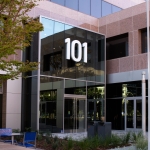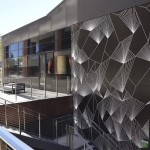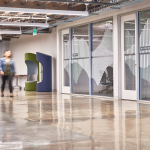When designing an effective wayfinding system, there are many factors to consider in order to create a successful strategy. Here are some tips and strategies to help ensure that your wayfinding system is both efficient and aesthetically pleasing:
- Think about the flow
Wayfinding should be designed with the natural flow of foot traffic in mind. Signs should be placed in strategic locations so visitors can easily follow directional cues without having to stop to read or look around. Wayfinding systems should also be flexible enough to accommodate changes in the layout of a space over time due to renovations or new construction projects.
- Use clear visual cues
Wayfinding signage should be designed using bright colors, bold typefaces, and appropriate symbols and icons that are easily understood by visitors at a glance. Wayfinding should also include signs that are in line with brand identity as well as consistent visual elements such as fonts and colors throughout the entire system, allowing visitors to quickly recognize directional guidance while giving them a sense of familiarity within the space.
- Integrate interactive technologies
Wayfinding is no more limited to physical signage anymore. It can also encompass digital experiences such as interactive kiosks or mobile applications that allow visitors to find their way through space more conveniently and efficiently. Incorporating interactive technologies into your wayfinding strategy can improve customer experiences immensely while helping reduce frustration when navigating complex spaces like airports or shopping malls.
- Minimize clutter
Wayfinding signage should be easy-to-read from a distance and placed on walls or other surfaces where they won’t interfere with daily activities or obstruct any views within the space. It’s important for designers to keep in mind how much information needs to be communicated on each sign so they can avoid overcrowding any area with too many directional signs, which could cause confusion and disorientation among visitors instead of providing guidance.
- Monitor foot traffic patterns
The last tip for creating an effective wayfinding strategy is monitoring foot traffic patterns over time so adjustments can be made, if necessary, in order to maintain accurate directions at all times. This includes keeping track of peak periods during which more directional information may be needed due to influxes of people as well as noting areas within the space that may need additional attention when it comes to navigation instructions due to security concerns or visitor feedback regarding difficulty getting around certain areas within the building or complex system layout.
Final Thoughts
Wayfinding signage eases the navigation for your new employees as well as clients when visiting your office premises. Implementing the above-mentioned tips, you will be able to create a successful wayfinding strategy. However, you may always hire a professional wayfinding signage company to get it done for you effortlessly.




